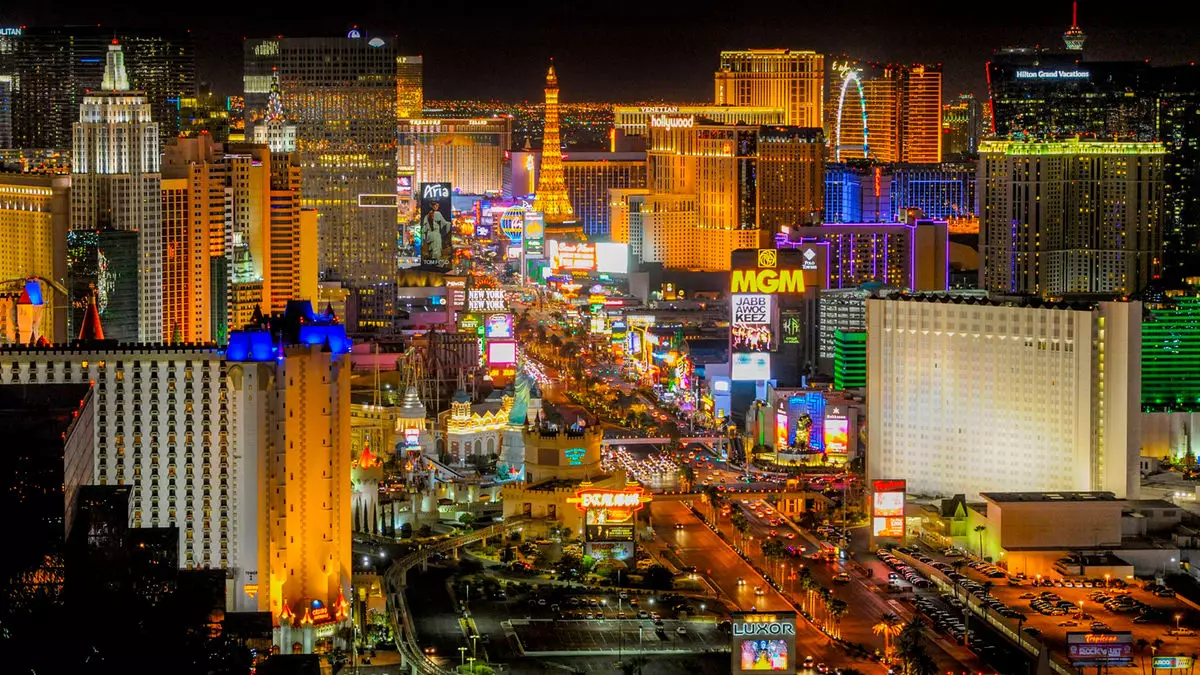In an era of post-pandemic recovery, Las Vegas—a city emblematic of vibrant entertainment and tourism—finds itself confronting dwindling visitor numbers. According to recent reports from the Las Vegas Convention and Visitors Authority (LVCVA), the city experienced a 7.8% decrease in visitation in March 2024 compared to the previous year, marking the third consecutive month of decline. This concerning trend raises alarms about the future of an economy heavily dependent on tourism. It is clear that the past three months’ declines—the sharpest since the pandemic took hold in 2020—call for urgent attention to retain Las Vegas’s status as a premier destination.
Analyzing the Numbers: What Lies Behind the Decline?
The statistics reveal not just a slight downward trend but a critical moment for Las Vegas’s economic landscape. While the data from March shows that approximately 3.4 million visitors arrived, the events that unfolded during this same month—particularly the aftermath of the Super Bowl held in February—often mask the deeper issues at play. A double-digit drop of 11.9% in February paints a concerning picture, particularly as visitors dissipated after what was envisioned as an uptick in tourism. The lesser-known but equally impactful elements such as evolving federal policies and a less robust event calendar might further deter potential visitors.
Kevin Bagger, director of the LVCVA Research Center, hinted that various factors are at play, suggesting that visitors may now face a gravitational pull of uncertainty. The impacts of shifting federal policy, coupled with public sentiment that fluctuates with the national and international political climate, can have profound effects on tourism. With fluctuating consumer confidence, especially among international travelers, it becomes apparent that there are multifaceted challenges that must be addressed for Las Vegas to recover fully.
The Convention Scene: A Silver Lining?
Despite the foreboding narrative, there remains a glimmer of hope in the form of convention attendance. While overall visitor numbers may be down, attendance at conventions has surged by 10.2%, with approximately 533,900 attendees participating in various events. Notably, the Healthcare Information and Management Systems Society conference, which gathered 48,000 attendees, illustrates that while leisure visitors may show hesitance, business travel still holds promise.
This may suggest a pivot point for Las Vegas, where the tourism equation is not solely defined by leisure but can also thrive on its reputation for hosting large-scale conferences. For the first quarter of 2025, however, convention attendance is still projected to decline by 1.6%, reflecting an ongoing need for innovation and marketing strategies tailored to attract diverse crowds.
The Impact of Transportation on Visitor Experience
In addition to the declining room rates and hotel occupancy, airport traffic, notably at Harry Reid Airport, has faced a significant drop, down 3.9% in March from the previous year. This decline in passenger traffic, particularly identified among Canadian and Mexican airlines, suggests that external geopolitical factors are beginning to cast their shadows on tourism.
As noted by Jeremy Aguero from Applied Analysis, wavering international relationships, political rhetoric, and potential economic repercussions like tariffs are leaving travelers hesitant. Fine-tuning strategies to address these issues of perception and safety could be essential for restoring faith in the Las Vegas experience.
Projecting Forward: Finding Optimism in Numbers
Despite these challenges, LVCVA President Steve Hill has adopted what he describes as a “conservative approach” to anticipate a 5% decline in room tax revenue in upcoming budgets. This proactive stance, while cautious, implicitly acknowledges the industry’s resilience and potential for rebound. The agency’s commitment to closely monitor visitor trends and adjust budgets accordingly demonstrates a vital understanding of the necessity for adaptability in business practices.
Envisioning the future of Las Vegas tourism requires not only acknowledging immediate hurdles but also embracing the potential for recovery. It will take substantial fortitude and creativity to restore the city’s attraction for tourists. Strategies that focus on reinvigorating international travel and demonstrating the safety and vibrancy of the Las Vegas experience must be at the forefront of future marketing campaigns.
In light of the shifting landscape, it is essential that stakeholders within the tourism industry create innovative offerings that enhance both the visitor experience and the confidence of potential travelers. The road ahead may look challenging, but Las Vegas, with its undeterred spirit, must boldly look toward revitalization and reinvention to thrive in this ever-evolving market.


Leave a Reply